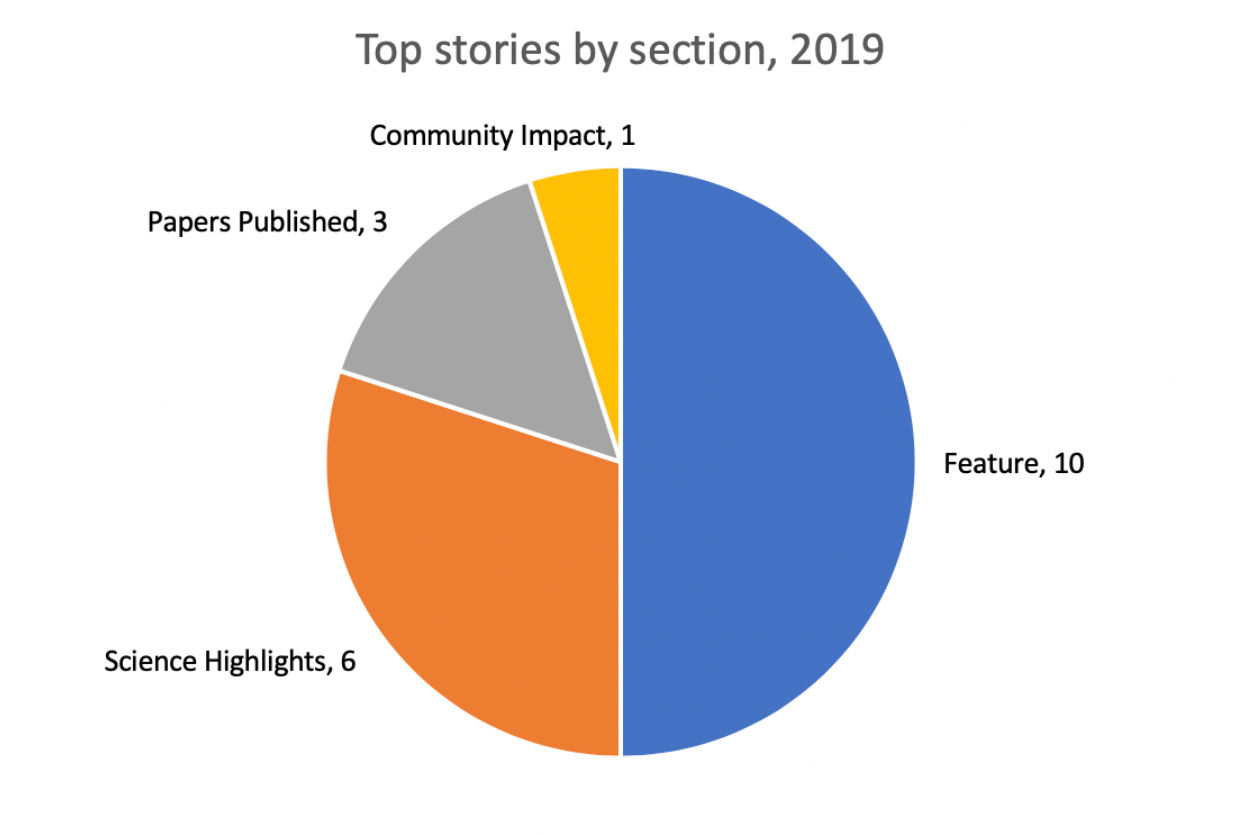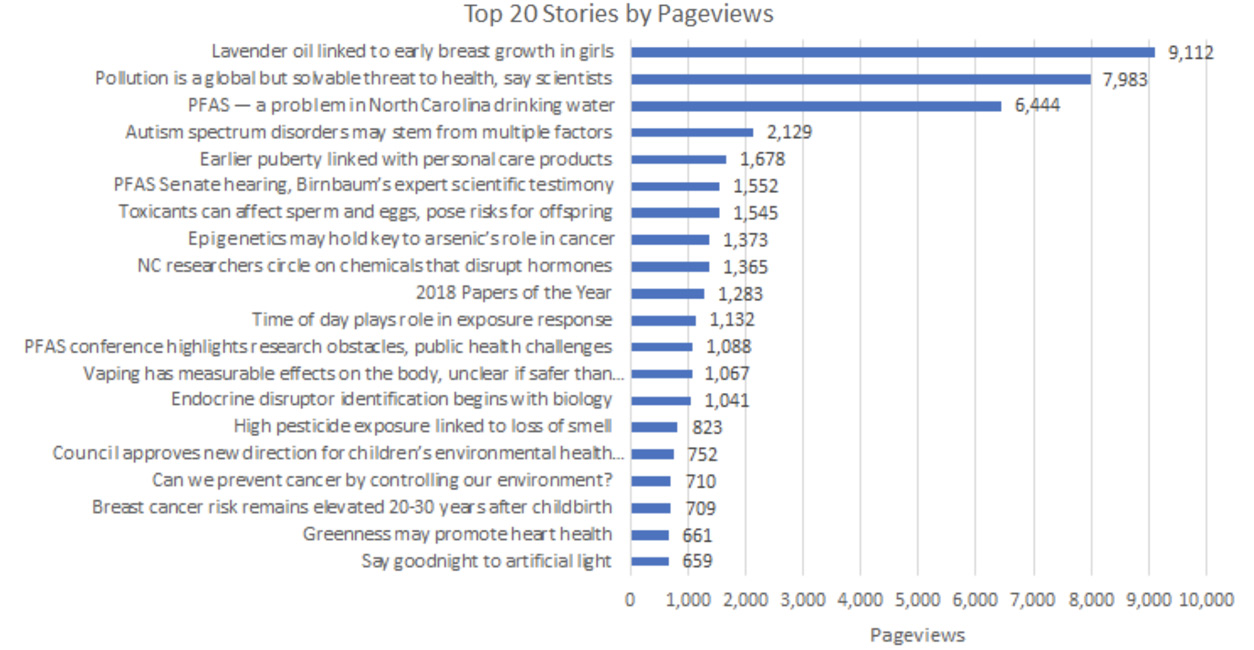Once again, the Environmental Factor (EF) looks back at the top 20 stories of the year (see sidebar). In contrast to 2018, when cell phone studies powerfully dominated readers’ interest, three distinct stories stood out in 2019, collecting more page views than all other top stories combined.
The data below show the number of times a story was viewed during 2019. Many readers find our content through search engines, which means that articles continue to attract readers long after they are published. Therefore, stories from issues in the early months of the year have more time to collect readers that those in the most recent issues.
Chemicals and health
Not surprisingly, chemicals and health concerns ranked high in our readers’ minds, and some topics showed up multiple times. Three topics had three appearances each on the list.
 Lenox has edited the Environmental Factor newsletter for the past six years and welcomes input from readers. (Photo courtesy of Steve McCaw)
Lenox has edited the Environmental Factor newsletter for the past six years and welcomes input from readers. (Photo courtesy of Steve McCaw)- PFAS, or per- and polyfluoroalkyl substances, were the subject of articles published throughout the year. This class of long-lasting chemicals continues to make headlines across the country as more cities and towns detect PFAS contamination in their drinking water sources.
- Endocrine-disrupting chemicals (EDC) appeared in stories about lavender oil, personal care products, and a meeting of EDC researchers here in North Carolina.
- Cancer topics varied from the mechanisms of arsenic’s role in cancer to elevated breast cancer risk after childbirth.
Circadian, or daily, rhythms featured in two of our most popular stories, which reported on connections with obesity and variations in the body’s response to toxicants.
Featured stories
Like last year, half the stories on the list were from the top, or featured, section of the newsletter. The 10 stories from other sections suggest that those who come to EF read deep into an issue, not stopping with the headliners.
We select our featured stories based on wide appeal, importance, and timeliness with respect to the news of the moment. For example, the November lead story discussed a review of scientific literature on health effects of vaping, or e-cigarette use.
Although published late in the year, the piece ranked number 13 on the list, picking up on widespread interest in the mysterious illnesses among vapers across the country. That illness is now believed to be linked to the presence of vitamin E acetate in vaping liquids.

On what devices?
As with any digital publication, the most popular stories gain that status after readers share them on social media. A look at the devices our readers used underscores the power of social media in information sharing.
On average, about 10% of visitors to the EF site use mobile devices. In contrast, the top-ranked lavender oil story saw 30% of its readers coming on mobile devices, suggesting they are following links seen on Facebook, Twitter, LinkedIn, and elsewhere.
Stay tuned in 2020 for a new feature in the Environmental Factor — a rolling list of recent top stories.










